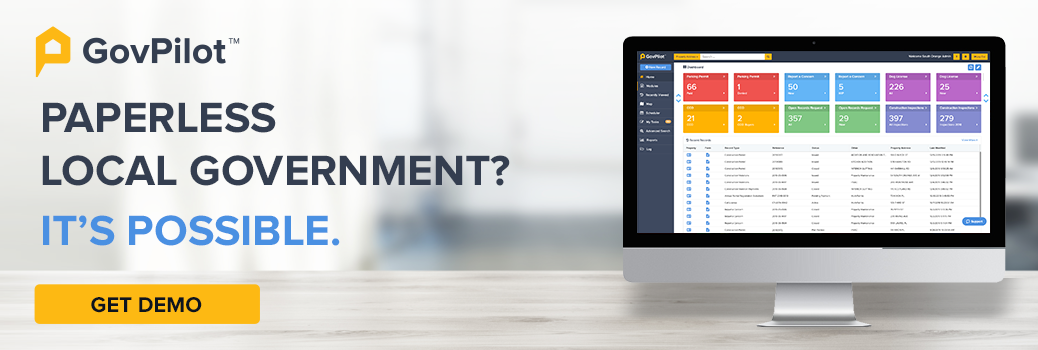When it comes to getting things done as a local government, two of the most critical variables are budgets and timeframes. To be as efficient as possible, you’ll need an ironclad strategic plan for your local government that showcases how you’ll spend your local budget and how you and your subcontractors will meet timeframe deliverables on public projects.
Here, we’ll explore the key reasons that you owe it to your constituents to have a local government strategic plan, along with examples and tips for crafting the best plan possible.
What is a Government Strategic Plan?
A local government strategic plan is the process of assessing and addressing the current situations in your area as they pertain to critical physical infrastructure, regional natural disasters, government technology, cyber-security, the health of your constituents, and other variables that will have a direct impact on your neighborhood and constituents. Once your local government identifies the largest threats for your neighborhood, the key to a high-quality government strategic planning process is forming a plan for mitigating risk and completing infrastructure projects as cheaply and quickly as possible.
Why is a Strategic Plan Critical for a Local Government?
Without a gameplan, your locality is more likely to blow through your departmental budgets and miss deadlines for infrastructure projects. Strategic plans allow your governmental officials to give serious consideration to the future before building a roadmap that will help your team to achieve goals that matter to your constituents.
What Should Be Included in a Government Strategic Plan?
Your local government will need to consider national issues that pertain to town and city governments across the United States as well as regional issues that more directly impact your community than localities elsewhere.
Here’s a look at the common features of a local government strategic plan:
1. Voices Across Government Departments & Roles
While government leadership should play a major role throughout the strategic planning process, a true risk mitigation effort needs to consider various perspectives and potential future outcomes. Working with a diverse rank of government officials across departments and leadership levels will allow you to craft a well-rounded strategy.
2. Consider Your Mission
Your local government needs to build your plan around a general mission statement. At a high-level, what are the issues your government is most determined to address? What upcoming public projects matter most to your constituents?
Giving these questions serious thought will allow you to articulate the key components of your strategy in a simple mission statement.
3. Holistic Risk-Assessment
Every government has risks to consider and address with policy and infrastructure projects. A holistic view of the various threats to your locality will include:
- National issues: social and economic challenges are occurring at the national level, and constituents on both sides of the aisle are frustrated with their government’s inadequacies. Consideration to which issues matter most at a national level will allow your locality to take localized efforts to address them.
- Constituent frustrations: angered constituents equates to a failed re-election effort. Your local government needs to consider which issues matter most to your constituents, and assess these issues to prevent bad government-constituent relations. Read this guide to learn more about Why the Public is Losing Trust in Local Governments
- Economic hardship: especially as we enter a period of recession, your local government will need to consider the impact of inflation on local businesses, constituents, and budgets.
- Natural disasters: which particular natural disasters pose the largest risk to your area? What actions have / are being taken to address these disasters, mitigate risks, and communicate with the public?
- Cyber attacks: hackers have been causing local government data breaches for years, and attacks are becoming more frequent. Have you made the effort to embrace cyber secure technology and back up your government data?
- Intergovernmental challenges: are you having issues recruiting new government workers? Are your internal processes inefficient and expensive? Is your information technology strategy up to date? Failure to recognize and address these types of issues is one of the biggest causes of inefficient bureaucracy.
- Public policy: which national and state laws are the highest priority for your locality to address in the near future? What penalties will you face for failing to address these policies?
4. A Refined List of Issues
Once you’ve considered all of the broad risks, it’s time to prioritize the most important ones and build your strategic plan to address them. The top issues should be concerning to your constituents, pose serious risks to the health, quality, safety, economy etc. of your community, and will be quintessential to the future endeavors of the local government and township as a whole.
5. An Actionable Gameplan
Now that you’ve collectively agreed on the major issues, it’s time to consider the course of action to address them. Your local government strategic planning needs to articulate where departmental budgets will be allocated in coming months and time frames for getting work completed along with actionable strategies for hitting these deadlines.
To save time and money, many local governments are embracing a digital transformation with government management software. This software automates government tasks and stores financial data in real time, meaning you’ll be able to regularly assess your budgets and save time on government projects.
6. Use Measurable KPIs
To assess your performance, you’ll need to determine which key performance indicators (KPIs) matter most in your strategic plan and set measurable goals for each.
Consider the following goal types when setting your KPIs:
- How much is this public infrastructure project expected to cost?
- How long is this government project going to take?
- Are constituents happy with the efforts being taken by our locality?
Gauging timelines, public perception, project budgets, and other key aspects of a strategic plan will make it easy to see if you're nailing your goals or missing the mark. Learn more in our guide to Setting Measurable Local Government Key Performance Indicators (KPIs)
Once KPIs are identified, outline who’s doing what and assign them a task via your local government management platform to keep everyone organized and accountable.
7. Put Your Plan Into Action
Upon the completion of your plan and approval of the policymakers for budgets and timeframes pertaining to the key projects, it’s time to take action on implementing your government projects. Release RFPs for private-sector partnerships, begin filing the key paperwork, and ensure intergovernmental communications make it explicitly clear who’s doing what and when.
Here’s a real-life strategic planning example of How Jackson, NJ Successfully Took Action on Their Government-Wide Digital Transformation Goal.
8. Get Back to the Drawing Board
Taking strategic action to address risks obviously involves some risk in itself. You’ll need to pay key attention to your KPIs, and pivot if issues arise with meeting timeline and budgetary goals.
If these types of issues do occur, you’ll need to consider which aspects of the process could be streamlined with government technology. Automation will save time and money to increase the success rate of projects outlined in your management planning.
Pro Tips for Mastering Local Government Strategic Planning
While the above section highlighted the key aspects of the government strategic planning process, this section will teach you the best practices for taking it to the next level.
Here are some key tips for mastering strategic planning:
- Don’t be late to making a digital transformation: states like NJ and FL are setting the tone by passing electronic permitting and inspection laws for a reason: because it saves governments time and money and boosts the local economy. To mitigate risk across the board before you even get to strategic planning, going digital will make future endeavors more efficient and timely (and mitigate cybersecurity threats!.)
- Correspond with constituents constantly: your constituents elected local leadership because they believed you’d make serious strides towards improving their local quality of life. To make that happen, you’ll need to truly understand which issues are most concerning to them. Having a firm grasp on constituents’ takes on major issues and where public funds should be allocated will make it easier to make a strategic plan that positively benefits the people in your neighborhood.
- Give government officials time to think about the strategic plan: Government leadership should let government workers know in advance that they’ll be asked for input on the government strategic plan. That will give them time to truly ask big questions when it comes to the biggest issues in your locality to prioritize.
- Check in on your financial dashboards: knowing where your taxpayer dollars and federal grants (from recent legislation like the American Rescue Plan and Infrastructure Investments & Job Acts) are being allocated is quintessential to seeing a government strategic plan through. With GovPilot, data across departments is pulled into financial dashboards in real time, allowing you to see where money is being spent and how cost per project is lining up against your budget.
- Use automated RFP notifications for local business partners: efficient and cost effective private-sector partners will be critical to seeing your highest priority physical & digital infrastructure projects through. With automated RFP software, you can send email blasts / texts out to local private sector businesses and collect proposals in a simple online platform. Learn more in our guide to the Best Software for Government Procurement.
Understanding the Government Strategic Planning Process
Failure to prepare is preparing to fail. Your constituents deserve a well-thought out gameplan for how their tax dollars are being spent and how their elected officials are bringing about meaningful change. Take the time to strategic plan across the entirety of your municipal or county government by considering the largest risks and how you’ll address them. Answer big questions regarding costs and timelines, and set actionable KPIs to turn your plan into action. And use government technology to automate workflows, track budget allocation, and get paperwork filed quickly.
Learn more about how GovPilot government software can transform your local government processes with a free demo.
Real Life Government Strategic Plan Examples & Success Stories
GovPilot takes pride in being the operating system for local governments. Here are some case study examples of challenges that localities were facing, and how shifting online helped them to hit their strategic planning goals across departments:
- Big Bear Lake, CA’s Economic Goal: Increase Vacation / Short-Term Rentals With Online Applications
- How Galloway, NJ Improved Their Public Records & Document Request Processes
- How Bexar County, TX Streamlined the Permitting Review Process
- How Atlantic City, NJ Maintained Zoning Processes During the Pandemic Lockdowns
- Atlantic City Had a Goal to Modernize IT. Here’s How They Did It in Weeks
Read on:










